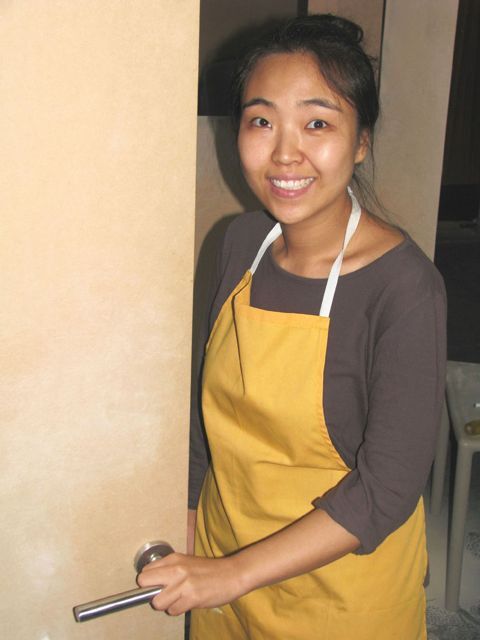What are you supposed to do when an earthquake hits? If you answered “Go stand in a doorway,” you get a gold star... although "Get under a table" would also be correct. Doorways are structurally stronger than most other parts of a building, and are often the last thing left standing when a structure has been destroyed by an earthquake. A narrow doorway offers little, however, in the way of protection from falling debris. That’s why an MA Design student from England’s Kingston University has invented a special kind of door.
With news of the catastrophic Haiti earthquake as her motivation, Kingston’s Younghwa Lee wanted to design something that would allow more people to survive future earthquakes. What she came up with is a door that can pivot horizontally within its frame, so people can take shelter underneath it.
The door also folds horizontally in the middle, so the bottom part of it remains braced against the floor for added support. Because the door will be sitting at an angle when it’s in “earthquake mode,” debris will slide off of it instead of collecting on top.

A small cabinet built into the door frame contains a wind-up flashlight, containers of drinking water, and medical supplies. There should be room for two people under each door.
Younghwa designed her door with the city of Istanbul in mind, as the U.S. Geological Survey has estimated there is a 70 per cent chance the city will be hit by an earthquake measuring 7.6 on the Richter scale before 2030, possibly resulting in up to 150,000 fatalities. She thinks her doors could be inexpensively installed in many of the homes in that city.






